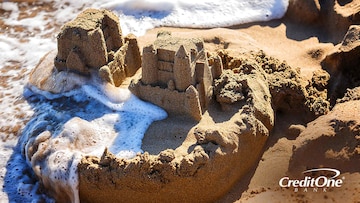How to Rebuild Your Credit With Credit Cards
September 12, 2016
Comeback stories take hard work. But your journey can go more smoothly if you learn how to rebuild your credit with credit cards.

Introduction
Sometimes, things come up. Heavy traffic, inclement weather, the flu — all of these are challenges to our daily routine, but they’re things we can easily move on from.
But with some things, moving on is a lot harder. Foreclosures, bankruptcies and medical emergencies aren’t just challenging when they happen, they can have long-term repercussions on your credit.
Luckily, long-term doesn’t mean forever. Learning how to rebuild your credit is easier than it seems and one of the easiest ways to start is with a tool you may already have: A credit card.
How Long Does It Take To Rebuild Credit With a Credit Card?
It generally takes 6 to 12 months for something to have a positive effect on your credit score. When you’re starting from a lower credit score, positive actions have a bigger impact than when you’re a little higher up.
When it comes to moving up to a higher credit score range, going from a poor credit score (around 500) to a fair credit score (580 to 669 range) can take around 12 to 18 months of responsible credit use. Once your credit score has improved a bit, the rate at which it goes up will slow down. But your score will continue to rise if keep using credit wisely.
It might feel like a long journey, but it can help to watch progress as it happens. Many banks, credit card issuers and the three major credit bureaus themselves — Experian, Equifax and TransUnion — offer ways to check your credit score for free on their app or website. Taking advantage of this can help you chart the course ahead and track your progress as you go.
What Is the Fastest Way To Build Credit?
To build credit, you have to use credit. But this doesn’t mean making unnecessary purchases on a credit card just for the sake of building credit, since that could lead to going into debt.
Instead, you can use your credit card on everyday purchases, like groceries, gas and other essentials. Think of the purchases you need to make anyway and put them to work for you in building your credit.
As you use your card, you’ll also want to pay attention to the factors that affect your credit score. These are:
- Payment history, including on-time, late and missed payments
- Credit utilization ratio, or the portion of your credit lines you’re currently using
- Credit age, or how long it’s been since you opened accounts
- Credit mix, meaning you have credit cards, retail store cards, and/or loans and mortgages
- New credit, or the number of accounts you’ve opened recently
All of these play a role in building or rebuilding credit, but let’s focus on payment history and credit utilization ratio, since we’ll be acting on those directly first.
You’ll get the most out of your credit rebuilding efforts by making your credit card payments on time, every time. Always pay at least the minimum amount due. But if you pay the full balance each billing cycle, it’s even better, since you can take advantage of your card’s grace period to avoid interest charges on the balance.
And speaking of balances, try to keep your credit utilization ratio — your total revolving credit balances compared to your total available credit — below the expert-recommended figure of 30%.
Follow these guidelines and use your cards thoughtfully on everyday purchases, and you’ll start to see your credit improve as your activity is reported to the credit bureaus.
Ways To Build Credit With a Credit Card
Once you’ve begun the journey of rebuilding your credit with a credit card, you can take some early steps to help your plan stay on track.
Use a credit card that works for you
First, start with a card that aligns with your needs, goals and habits. You might already have a card you’re perfectly happy with.
If so, great! That’s one item you can check off the list.
If not, look into your options and consider potential fees, rewards and benefits, as well as your chances of being approved.
There are even credit cards made specifically for rebuilding credit. These may provide credit line increase opportunities as a way of recognizing the progress you’re making.
And remember, you can sometimes check if you’ve been pre-approved or pre-qualify for a card on a lender’s website.
Despite similar names, these are two slightly different processes, but neither one impacts your credit score just for checking.
These are helpful tools if you don’t know what cards you’re likely to be approved for. But keep in mind that neither is a guarantee that you’ll be approved, simply a sign that you’re more likely to be approved.
Another option is to apply for a secured credit card, a common choice for individuals who are building or rebuilding credit.
These cards are backed by collateral, a refundable deposit usually equal to the credit line. A typical example would be providing a creditor with a $250 deposit, in exchange for a $250 credit line on that card.
Start using a budget
Next, you’ll want to create a budget and stick to it.
There are a number of approaches or budgeting systems, and even if you’ve dabbled in budgeting before, you might find that a different system works better for you.
By using a budget, you know exactly how much you can spend. This lets you confidently use your credit card for day-to-day purchases without worrying about taking on extra debt, so you can go about rebuilding your credit.
Mind those credit score factors
Remember those factors that go into your credit score?
We covered the importance of paying your bills on time, every time, and keeping your credit utilization ratio below 30%.
But you also want to pay attention to the credit age, credit mix and new credit factors.
It’s best to keep older credit card accounts open, since closing them would reduce the average length of your credit history. It’s also best to avoid applying for too many new accounts in a short span of time. Not just because of the new credit factor, but also because applications trigger a hard inquiry on your credit report, which can lower your credit score.
Keep an eye on your credit report
Finally, it’s a good idea to monitor your credit reports. Fraud happens. Mistakes happen. Regularly monitoring your credit reports can help you catch suspicious activity or errors before they can become more of a problem.
And these days, it’s pretty easy to monitor your credit reports. By law, you’re entitled to a copy of your credit report from each of the three credit bureaus every year, but now you can request them weekly at the federally authorized AnnualCreditReport.com.
Bottom Line
Rebuilding your credit with a credit card takes time. It takes planning. And it definitely takes work.
But once you get the ball rolling with strategic credit card use, budgeting and monitoring your credit, it feels pretty good to see that work pay off in the form of a rising credit score.
If you’re interested in getting a card for rebuilding your credit, you might consider the Credit One Bank Platinum Visa for Rebuilding Credit. Checking to see if you’re pre-qualified is free and will not affect your credit score.



